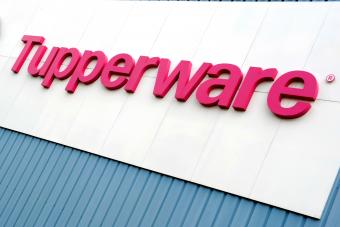
Vintage Tupperware can bring up nostalgic memories. If you're interested in collecting vintage Tupperware, or are curious if your own vintage Tupperware is worth something, there are a few tips and guidelines to keep in mind.
Vintage Tupperware History
The history of tupperware began in 1946, when airtight seals were introduced by Earl Tupper. Despite its potential to prolong the shelf-life of food, tupperwares didn't sell well at first. In 1948 Tupperware parties began, under Vice President of sales, Brownie Wise, as a way to show consumers how to use the product and why this lighter and less breakable product would make their lives easier. From there, sales skyrocketed. Tupperwares varied in colors and were often named after gem stones or fruit. Some names included orange, frosted crystal, and sapphire.

Vintage Tupperware Identification
To identify if you have a genuine Tupperware check for:
- Make sure your item matches the shape and available colors available at the time of creation in accordance with the lines released (Wonderlier bowls, Bell tumbler, Millionaire collections, Carousel caddy, Servalier astro bowls, cake taker, condiment caddy, Flatout line)
- The brand name "Tupperware" stamped onto the bottom of the container
- Two-part number stamped onto the bottom of the item
To check to see if your Tupperware is genuine, submit the first part of the two-part stamped number (known as the mold number) to a Tupperware representative.

Vintage Tupperware Collecting Tips
Vintage tupperware can be found at thrift stores, estate sales, on sites that curate vintage goods, and on online auction sites. If you would like to begin collecting Tupperware, be sure you look for the brand stamp, as well as the two-part number on the bottom of every item you are interested in purchasing. If you plan on buying and reselling vintage Tupperware, look for complete sets in good condition, as well as unique colors that may be difficult for others to find.
Is Vintage Tupperware Worth Anything?
Whether vintage tupperware is worth anything depends on a fluctuating market of consumers who can either drive prices up or down. However, Tupperware items in complete sets that are in new condition tend to be worth the most money.
Vintage Tupperware Price Guide
Vintage Tupperware pricing will fluctuate depending on the demand from buyers. In general:
- Full sets in difficult to find colors can sell for hundreds of dollars
- Complete line sets can sell between about $50 to $75
- Salt and pepper shaker set may sell for about $50 up to about $200 depending on its condition
- Single pieces in good condition can sell from $5 to $20
Is There a Market for Vintage Tupperware?
There is a following of individuals interested in collecting vintage Tupperware. If you are planning on reselling your vintage Tupperware, keep in mind that single pieces, as well as complete sets typically don't sell for hundreds of dollars. If you already own vintage Tupperware, and are interested in selling it off, chances are you'll be able to find a buyer if your items are in good condition. Know that with collectible items, trends can heavily influence what makes for a "good" collectible purchase.

Rare and Valuable Vintage Tupperware
Tupperware with the "Tupper" mark tend to sell at a high price, as the insignia was not common for all products. Pink Tupperware, due to its tendency for fading, is another rare find that collectors may look for specifically. Keep in mind that white or crystal Tupperware tended to be the most common, so these may be easier for buyers to find.
What Tupperware is Worth Money?
Tupperware in complete sets and in good or unused condition tend to be worth the most money. Certain buyers may also be drawn to a color that is more challenging to find. Items that may be worth money:
- Full sets in the color pink
- Full set salt and pepper shakers
- Tupperware with the "Tupper" marking
- Full sets in good condition in a color, not white

Vintage Tupperware Toxic
Vintage tupperware can be dangerous, with items testing positive for lead, arsenic, cadmium, and mercury. Especially because Tupperware were marketed to be microwave safe, toxicant leaching can be a serious issue with vintage items that may be worn out. It's also important to note that Tupperware didn't formally remove BPA from its products until 2010. BPA stands for Bisphenol A and exposure to it can lead to very serious health hazards.
Understanding the Ins and Outs of Vintage Tupperware
Whether you were given vintage Tupperware or are tinking of collecting your own, it's important to understand the value and safety of vintage Tupperware pieces.







